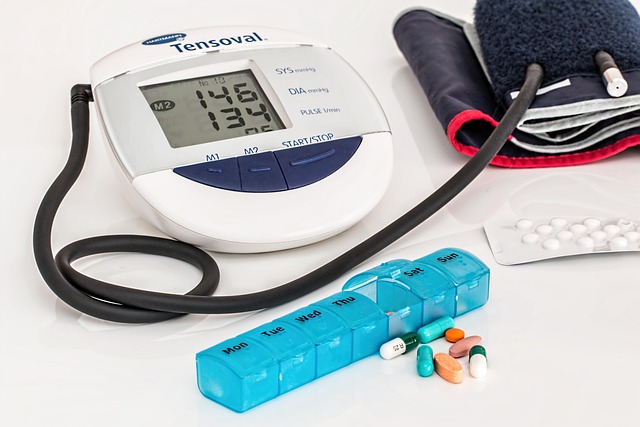Understanding Crohn's Disease: Symptoms, Causes, and What to Expect in 2025
Crohn’s disease is a chronic condition that affects millions. This guide explores the symptoms of Crohn’s disease, including how it manifests in females, the stages of active Crohn’s, and what to expect when living with this condition. View real-life Crohn’s disease pictures and learn about treatment options

Crohn’s disease represents one of the most challenging inflammatory bowel diseases, characterized by chronic inflammation that can affect any part of the gastrointestinal tract from mouth to anus. Unlike other digestive conditions, Crohn’s disease involves inflammation that extends deep into the layers of affected bowel tissue, leading to a wide range of symptoms and complications. The condition typically develops between ages 15 and 35, though it can occur at any age, and affects men and women equally.
How Crohn’s Disease Affects the Body
Crohn’s disease creates inflammation throughout the digestive system, most commonly targeting the end of the small intestine and the beginning of the colon. The inflammation occurs in patches, meaning healthy tissue exists between inflamed sections. This patchy pattern distinguishes Crohn’s from ulcerative colitis, which affects only the colon’s innermost lining continuously. The inflammation penetrates through all layers of the intestinal wall, potentially causing strictures, fistulas, and abscesses. Beyond the digestive tract, Crohn’s disease can trigger systemic inflammation affecting joints, eyes, skin, and liver. The immune system mistakenly attacks healthy tissue, creating a cycle of inflammation and healing that leads to scarring and narrowing of the intestinal passages. Malabsorption of nutrients becomes a serious concern as inflamed tissue struggles to absorb vitamins, minerals, and other essential nutrients properly.
Symptoms of Crohn’s Disease in Females
While Crohn’s disease affects both genders similarly, women may experience unique manifestations and challenges. Common symptoms include persistent diarrhea, abdominal cramping, blood in stool, fatigue, and unintended weight loss. Women with Crohn’s disease often report more severe fatigue compared to men, potentially due to iron deficiency anemia from chronic blood loss and poor nutrient absorption. Menstrual irregularities occur frequently, with some women experiencing delayed periods or amenorrhea during disease flares. Fertility concerns arise as active inflammation and certain medications can affect reproductive health, though many women with well-controlled Crohn’s disease have successful pregnancies. Bone density loss presents another significant concern for women, as chronic inflammation, corticosteroid use, and malabsorption of calcium and vitamin D increase osteoporosis risk. Additionally, women may develop perianal disease, including fissures and fistulas near the rectum, which can be particularly distressing and require specialized treatment approaches.
What to Expect with Active Crohn’s
Active Crohn’s disease, also called a flare, brings intensified symptoms that significantly impact quality of life. During flares, individuals experience frequent bowel movements, sometimes exceeding ten times daily, often accompanied by urgency and incontinence concerns. Severe abdominal pain, typically in the lower right quadrant, mimics appendicitis in some cases. Fever, night sweats, and profound fatigue become common as the body battles ongoing inflammation. Appetite loss and nausea lead to nutritional deficiencies and weight loss, while mouth ulcers make eating painful. Extra-intestinal manifestations may include joint pain and swelling, eye inflammation, and skin conditions like erythema nodosum. The unpredictability of flares creates significant anxiety, as symptoms can emerge suddenly without clear triggers. Some patients identify certain foods, stress, or infections as potential triggers, though these vary individually. Managing active disease requires close medical supervision, potential medication adjustments, and sometimes hospitalization for severe cases involving complications like bowel obstruction or perforation.
What Crohn’s Disease Pictures Can Show
Medical imaging and endoscopic photography provide crucial diagnostic and monitoring tools for Crohn’s disease. Colonoscopy images reveal characteristic features including patchy inflammation, cobblestone appearance of the intestinal lining, ulcerations, and narrowed segments called strictures. The cobblestone pattern results from deep ulcers separated by swollen tissue, creating a distinctive texture visible during examination. CT and MRI scans show inflammation extent, complications like abscesses or fistulas, and bowel wall thickening that indicates chronic disease. Capsule endoscopy, where patients swallow a pill-sized camera, captures images of the small intestine otherwise difficult to examine. These images help gastroenterologists assess disease severity, monitor treatment effectiveness, and detect complications early. External photographs may document extra-intestinal manifestations like skin lesions, while surgical images show the extent of damage requiring intervention. Visual documentation proves invaluable for treatment planning and helps patients understand their condition better.
Treatment Options and Expected Advances by 2025
Crohn’s disease treatment has evolved significantly, with 2025 bringing promising new therapeutic approaches. Current treatment strategies aim to reduce inflammation, achieve remission, and prevent complications. Anti-inflammatory medications like aminosalicylates serve as first-line treatments for mild disease. Corticosteroids quickly reduce inflammation during flares but are unsuitable for long-term use due to side effects. Immunomodulators such as azathioprine and methotrexate suppress immune system activity, while biologic therapies target specific inflammatory pathways. TNF-alpha inhibitors like infliximab and adalimumab have revolutionized treatment, and newer biologics targeting different pathways offer alternatives for non-responders. Small molecule drugs like tofacitinib provide oral alternatives to injectable biologics.
Looking toward 2025, several exciting developments are emerging. Personalized medicine approaches use genetic testing and biomarkers to predict which treatments will work best for individual patients, reducing trial-and-error periods. New biologics targeting interleukins and other inflammatory mediators are completing clinical trials, expanding treatment options. Stem cell therapy shows promise in early studies for refractory cases. Fecal microbiota transplantation is being investigated as a way to restore healthy gut bacteria balance. Advanced endoscopic techniques allow for minimally invasive treatment of strictures and early complications. Artificial intelligence algorithms are being developed to predict flares before symptoms appear, enabling preventive interventions.
This article is for informational purposes only and should not be considered medical advice. Please consult a qualified healthcare professional for personalized guidance and treatment.
Living with Crohn’s disease requires ongoing management, patience, and strong partnerships with healthcare providers. While the condition presents significant challenges, advances in understanding and treatment continue improving outcomes and quality of life. As research progresses and new therapies emerge, individuals with Crohn’s disease can look forward to increasingly effective management strategies. Staying informed about symptoms, maintaining open communication with medical teams, and participating in treatment decisions empowers patients to take control of their health journey. With proper care and the therapeutic innovations expected by 2025, many people with Crohn’s disease achieve long-term remission and lead fulfilling, active lives.



